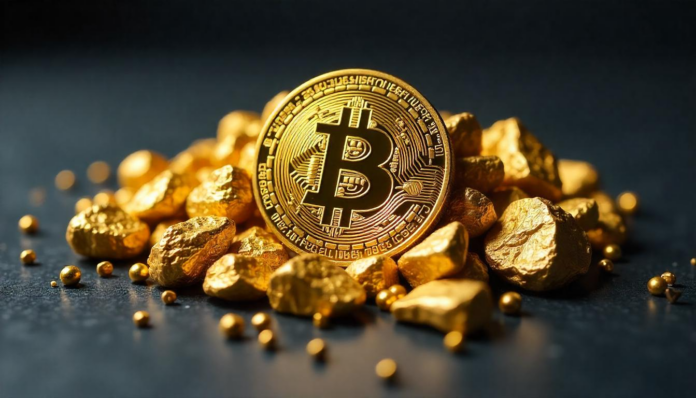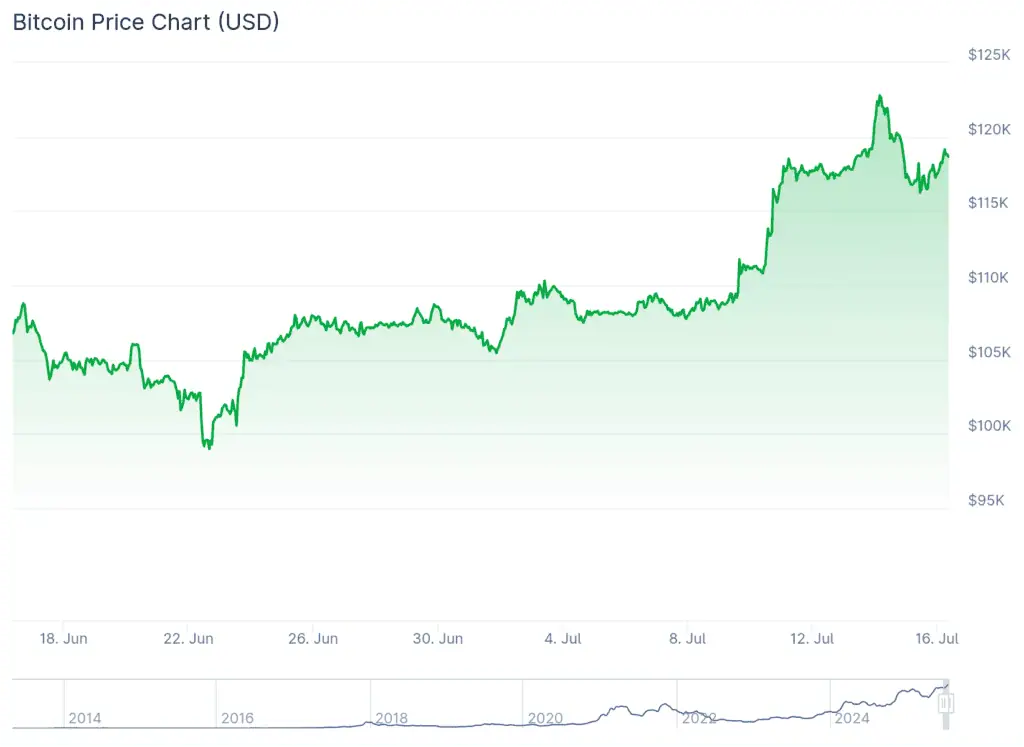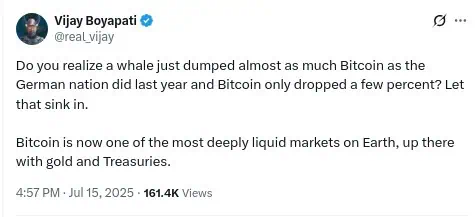
Institutional funds are strengthening their confidence in Bitcoin, considered "digital gold," amid its consolidation above $118.000. Meanwhile, another cryptocurrency is also gaining prominence and capturing the market's attention.
Bitcoin surpassed $123.000 in July 2025, setting a new all-time high (ATH). Currently, the leading cryptocurrency is trading at around $118.000, following a slight correction. However, it is consolidating its position as the digital gold of this era, being the most sought-after digital asset by institutional funds, banks, and corporate treasuries.
BUY BITCOIN ON BI2MEBitcoin's recent performance, marked by resilience in the face of corrections and increasing liquidity, positions it as the primary benchmark of value in the crypto ecosystem. Meanwhile, another cryptocurrency, XRP, is beginning to gain ground as an institutional settlement infrastructure, following Fedwire's adoption of the ISO 20022 standard.
Bitcoin reinforces its narrative as a store of value
During the first half of July, Bitcoin reached a new all-time high of $123,091 before retreating slightly and stabilizing around $118.000. This performance has been interpreted by analysts as a healthy consolidation phase, following a rise of more than $15.000 in less than a week. BTC's market capitalization remains close to $2,36 billion, with a dominance of 61,7% over the rest of cryptocurrencies.
The inflow of institutional capital has been key to this cycle. Funds like Cantor Fitzgerald are in the process of acquiring more than 30.000 BTC worth over $3.500 billion. Furthermore, Bitcoin ETFs have recorded net inflows exceeding $4.500 billion in July alone, reinforcing the theory that the current rally is driven by spot buying rather than speculative leverage.

Source: CoinGecko
Bitcoin liquidity boosts institutional confidence
One of the most relevant indicators of Bitcoin's maturity as a financial asset is its ability to absorb large transfers without generating significant price disruptions. In recent days, more than 40.000 BTC have been moved from traditional wallets to institutional custodians. Despite fears of a sell-off, the market is showing resilience, with a moderate decline followed by a rapid recovery.
In the face of all this, experts such as Vijay Boyapati and James Seyffart they coincide in which Bitcoin has become one of the most liquid markets in the world, comparable to gold and Treasury bonds. This liquidity allows large financial players to operate without drastically affecting the price, which in turn encourages greater institutional participation.

XRP integrates into the traditional financial system via Fedwire
In parallel with Bitcoin's growth, another cryptocurrency is also beginning to shine as an emerging symbol of "digital gold," but it is still in the process of consolidating this reputation.
On July 14, the U.S. Federal Reserve Bank's Fedwire system officially adopted the ISO 20022 standard, enabling real-time interbank transfers with enriched data and greater interoperability. This upgrade marks a milestone in the modernization of U.S. financial infrastructure and positions XRP as one of the few digital assets compatible with this new protocol.
RippleNet, Ripple's payment network, has been operating under the ISO 20022 standard since 2020, allowing institutions using Fedwire to integrate XRP as a settlement mechanism. Volante Technologies, the infrastructure provider for Fedwire-as-a-Service, confirmed that its platform supports settlement with Ripple's native cryptocurrency. This integration opens the door for banks and custodians to explore the use of XRP in high-value transfers, including bank reserves and Treasury securities.
The Rise of XRP: Massive Accumulation, Regulatory Breakthroughs, and the SEC's Decisive Vote
The adoption of ISO 20022 has coincided with a surge in XRP accumulation by large wallets. Currently, more than 2.743 addresses control over 47.320 billion tokens. Additionally, Ripple has applied for a national banking license in the US and a master account with the Federal Reserve for its RLUSD stablecoin, which now exceeds $500 million in market capitalization.
On the other hand, on July 17, the SEC will vote on the potential dismissal of its case against Ripple. If this happens, this event could remove the main regulatory barrier that has limited institutional adoption of XRP in the US.
Analysts like Steven McLurg, CEO of Canary Capital, anticipate that the XRP ETF could outperform the Ethereum and Solana ETFs, thanks to its real-world utility and legal clarity.
Bitcoin and XRP: Two Complementary Narratives in the New Financial Infrastructure
While Bitcoin is consolidating its position as a store of value and a strategic asset for corporate treasuries, XRP is positioning itself as a settlement infrastructure for interbank payments and cross-border transfers. Both assets represent distinct but complementary pillars in the evolution of the financial system toward more decentralized, interoperable, and efficient models.
The convergence of traditional infrastructure and blockchain is no longer a hypothesis: it's a reality underway. With Fedwire operating under ISO 20022 and RippleNet ready for integration, the crypto ecosystem is moving ever closer to full institutional adoption. In this constantly evolving scenario, Bitcoin and XRP are not just remaining current; they are booming, consolidating themselves as fundamental pillars in the new financial ecosystem.



